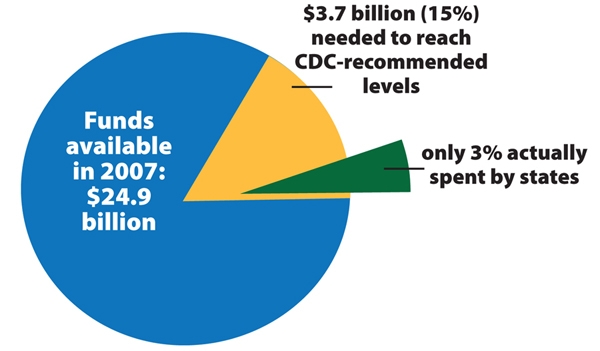I'm in a nanny state state of mind


In other words, the nanny state works.
The government broke out its numbers by age, race and education, as well as by state.
Rates are highest among native Americans (more than one-third), among those with limited education (nearly half of those with a Graduate Equivalency Diploma (GED) smoke), and in coal country (rates are highest in Kentucky and West Virginia).
Rates are lowest where elements of social control are strong (Utah leads at 11%), and where policies aggressively fight smoking (California is second at 14%). The rate in New York, where the state tax for each pack of cigarettes is now $2.75, dropped from 18.3% in 2007 to 16.8% in 2008.
Smoking is the leading cause of preventable death in the U.S., killing over 1,000 people each day, the CDC said, with 1 in 10 of those deaths being caused by second-hand smoke.
The real scandal, shown in the chart above, is that only 3% of the excise taxes and settlement dollars collected by states go to smoking cessation programs. While $24.9 billion is available, the states spend just $75 million. Tobacco companies spent $13 billion in advertising in 2006.
In other words, we're being outgunned better than 13-1 even though we're putting out twice as much money to fight smoking as the tobacco companies are laying out to keep it around. That's Halliburton-like efficiency.
If you want to save money on health care, in other words, maybe you too need to get into a nanny state state of mind. Or just become a little more personally intolerant of having smokers around you, so you don't wind up among the 100 non-smokers killed by cigarettes each day.